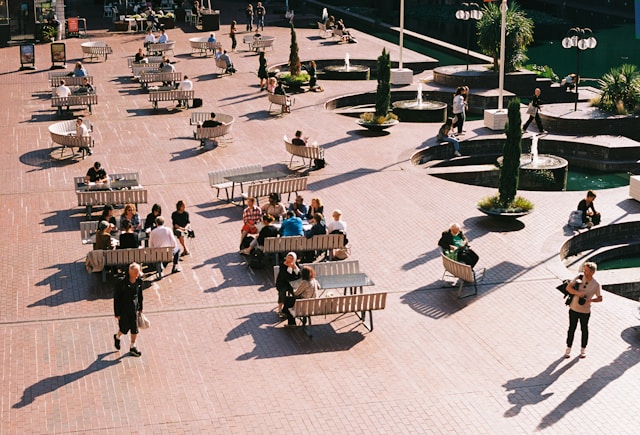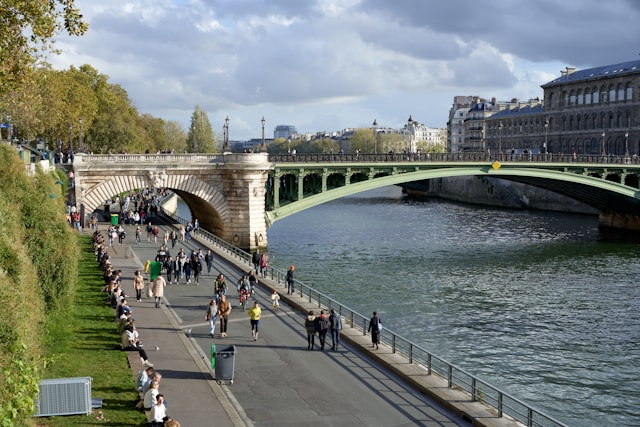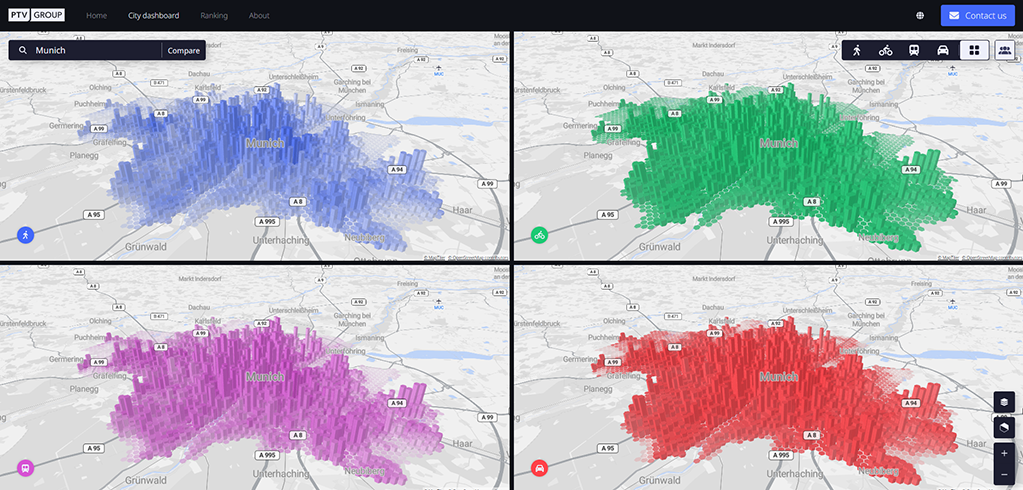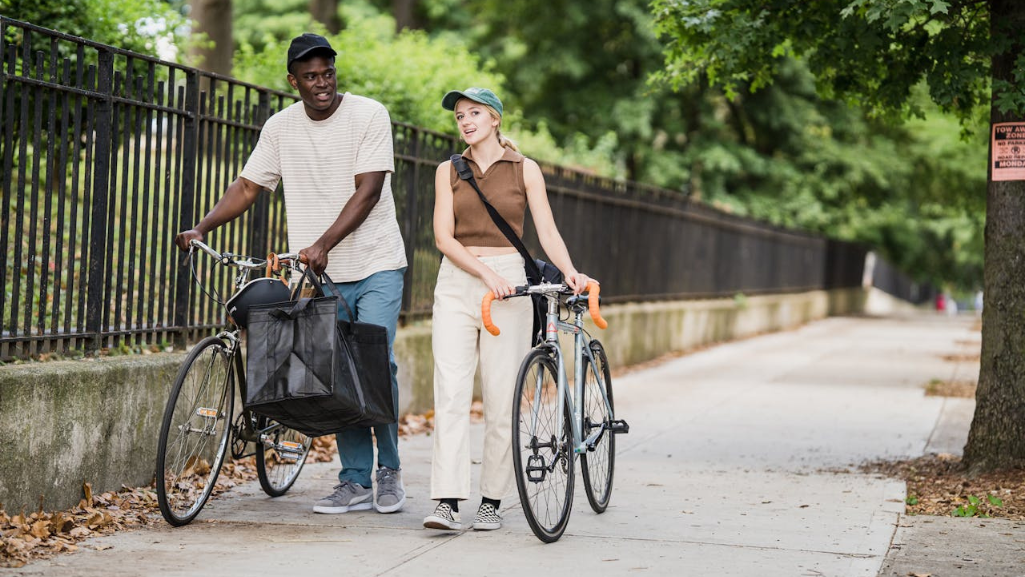Table of contents
As cities around the world face rising challenges – climate change, increasing urbanization and growing mobility demand – a quiet revolution in urban planning is gaining ground: The 15-minute city – a visionary model that reimagines urban life around accessibility and proximity.
What is a 15-Minute City?
At its heart, the 15 minute city is an urban planning concept that prioritizes access over mobility. Instead of highlighting how far or fast people can travel in a city, it focuses on cutting down the need to travel. Residents should be able to reach important places – schools, jobs, stores, healthcare, and parks – within a 15-minute walk or bike ride from home.
This challenges the traditional city model defined by long commutes, traffic congestion, and spatial fragmentation. By restructuring cities to bring everyday necessities closer to home, the 15-minute city promotes a more balanced, efficient, and sustainable way of life.
Carlos Moreno, an urbanist and professor at Sorbonne University in Paris, popularized the concept. He shared the idea at the 2015 Paris Climate Conference. This was in response to environmental damage, urban growth, and weaker social ties.
“Firstly, we need to break the dependency on the car, and switch from a car city to a human city,” Moreno said in a recent Cities Today interview. “This involves embracing active mobility while improving the capability of public transport.”
Moreno also introduced related urban design ideas. One is chrono-urbanism, which sees time as important in city planning. Another is proximity-based planning, which focuses on easy access to services and amenities in local neighborhoods.
Key Principles of the 15-Minute City Concept

The 15 minute city concept is built on four foundational principles that guide its application:
Ubiquity: Access to services must be widespread, inclusive, and equitable – regardless of income, age, or ability.
Proximity: All essential services – schools, shops, health facilities, and recreation – should be located near where people live.
Diversity: Neighborhoods should support a mix of functions and activities, from living and working to shopping and socializing.
Density: Urban areas should be compact and efficient, often involving the mixed use of buildings to support walkability and vibrancy.
The Role of Sustainable Mobility
15 minute cities stand as a direct counter-model to the car-centric urban planning that has dominated cities for decades. At its core, the model promotes human-centered mobility, prioritizing walking, cycling, and public transit.
Reducing car reliance not only cuts traffic and emissions but also boosts public health by encouraging physical activity. The 15-minute city features well-maintained sidewalks, pedestrian zones, protected bike lanes, secure bike parking, and bike-sharing schemes – creating safe, convenient alternatives to driving.
Benefits of the 15-Minute City

15 minute cities offer wide-ranging benefits across environmental, social, economic, and health dimensions:
Health: Active mobility reduces the risk of lifestyle-related diseases. It also improves mental well-being by promoting daily physical activity and stress-free commutes.
Environmental: Reducing car dependence leads to lower greenhouse gas emissions, less air pollution, and more green spaces.
Social: Walkable neighborhoods foster spontaneous interactions, stronger social ties, and a sense of belonging. Public spaces, community gardens, and local markets promote civic engagement and cultural diversity.
Economic: Local businesses benefit from foot traffic and neighborhood loyalty. The model supports job creation, entrepreneurship, and more equitable access to economic opportunity.
Challenges and Criticisms
Despite its appeal, the 15-minute city faces several hurdles. Here are some problems with the 15 minute city concept:
Public Perception: Some critics misinterpret the model as restrictive or authoritarian, imagining “city lockdowns” or limited personal freedom. These are misconceptions that urban planners must actively address.
Implementation Barriers: Many cities are built around car-centric infrastructure and zoning laws that separate residential from commercial areas, making retrofitting difficult.
Social Equity Concerns: Without careful planning, the model could accelerate gentrification, pushing out lower-income residents as neighborhoods become more desirable.
Global 15 minute city examples

Several cities have embraced this transformative urban model. Here’s a list of 15 minute cities and how they’re implementing the concept:
Paris, France
Under the leadership of Mayor Anne Hidalgo, has emerged as the global flagship for the 15-minute city. With advice from Carlos Moreno, she shared the idea in her 2020 re-election campaign. She started important reforms, especially during the COVID-19 pandemic.
Paris has since transformed large parts of the city. Authorities removed car traffic from the banks of the Seine and planted over 155,000 trees. Developers have repurposed vacant office buildings and underused garages into housing, coworking spaces, and retail hubs.
Paris now has nearly 1500 km of cycle paths, more Parisians bike than drive. These changes reflect a clear commitment to a greener, more accessible, and livable city. By 2050, Paris aims to reduce local emissions to net zero—with the 15-minute city at the heart of that strategy.
Barcelona, Spain
Barcelona has adopted a version of this idea with its “Superblocks.” These are groups of nine city blocks where car traffic is mostly limited.
Vehicles are rerouted around these areas, while within the Superblocks, only local residents and delivery services are allowed to enter, at speeds no greater than 10 km/h. Pedestrians and cyclists take priority.
The public spaces in these zones are now community gathering places. They include areas for markets, events, and play.
The results are clear: air and noise pollution have gone down. Accidents have also decreased. There is a sense of social renewal, with residents interacting more often.
Melbourne, Australia
Melbourne is pioneering its own version through the “20-minute neighborhoods” initiative. Part of its long-term strategic vision outlined in Plan Melbourne 2017–2050. The plan emphasizes safety, accessibility, climate resilience, local economic support, and quality public spaces.
By integrating mixed-use development and ensuring access to services and public transport, Melbourne aims to build healthier and more connected communities. According to Victoria’s Department of Transport and Planning, shifting just half of short car trips to walking could save the economy approximately $165 million annually in reduced congestion, healthcare, and infrastructure costs.
Portland, USA
Portland was the first U.S. city to officially adopt the idea of a 20-minute neighborhood. Its 2015 Climate Action Plan set an ambitious target: 80% of residents should be able to meet all daily, non-work needs within a 20-minute walk or bike ride.
One standout example is the Pearl District—formerly a rail yard and warehouse area, now a vibrant, mixed-use neighborhood filled with galleries, shops, housing, and parks. It’s a clear demonstration that thoughtful, localized development can bring about cultural richness, economic vitality, and a high quality of life.
A Holistic Approach to Urban Planning

So, what are the 15-minute city rules for implementing the concept? It demands a holistic, systems-based approach to city planning. Urban and traffic planners, policymakers, private stakeholders, and local communities must work together. Community participation is essential to ensure that the evolving city reflects the needs, aspirations, and lifestyles of its diverse residents.
Technology and data play a crucial role. Accessibility analysis tools, for example, help planners assess how easily people can reach destinations like schools, jobs, parks, or grocery stores by walking, cycling, public transport, or driving.
Data analytics, advanced modelling and simulation allow cities to understand how infrastructure changes will affect different population groups and take the right decisions. Dynamic dashboards and animations help communicate plans to the public, build support, and make abstract planning ideas tangible. These tools are not just technical aids – they are storytelling mechanisms that help generate public enthusiasm and trust.
More than a planning idea
The 15-minute city is more than just a planning idea. It’s a vision for making cities more humane, sustainable, and equitable. By localizing daily life, reducing our dependence on cars, and reimagining urban spaces around people rather than vehicles, this model offers a clear path forward for urban development in the 21st century.
As urbanization continues to shape our world, it is imperative that we explore innovative ideas like the 15-minute city. Digital tools form the basis for leveraging potential and implementing the best ideas.

Urban Mobility Planning: Challenges & Solutions
Discover the biggest urban mobility challenges and the solutions needed to overcome them.

Accessibility analysis
How can residents in your city access jobs, schools, parks, and other key destinations using all modes of transportation? An accessibility analysis provides valuable insights into what’s working—and reveals the barriers that hinder better connectivity.



